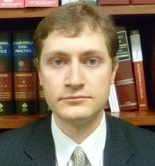Grinberg: Another Item on the Wish List: Rule 35.5(e)
Tuesday, August 15, 2023 | 0
Did you know that sometimes regulations are written with invisible ink? It’s true. Crack open the books and look at Rule 35.5(e).

Gregory Grinberg
If you ask those in the know from the workers’ compensation community, that rule is practically invisible. At least, that was the holding in the Workers' Compensation Appeals Board en banc decision in Navarro v. City of Montebello (2014), where the board held that when a claim form for a subsequent injury is filed after a qualified medical evaluation for an open claim, the applicant is not required to return to the same QME to address the subsequent injury.
What’s the result? Applicants can remedy their dissatisfaction with a QME’s report by doctor-shopping for a second QME by filing an additional claim, typically a cumulative trauma. This results in increased delays and expenses for defendants who bear all litigation and med-legal costs in workers’ compensation matters.
The effect of Navarro and the position that rule 35.5(e) is invalid serves to drive up costs for defendants in this way. The recent panel decision in Sahli v. Nordstrom solidifies this position.
There, defendant petitioned for reconsideration of several findings by the workers' compensation judge, among them that the second panel obtained by applicant was valid based on Navarro. The WCAB denied reconsideration, adopting and incorporating the WCJ’s report on reconsideration.
In that report, the WCJ wrote, “Even before Navarro, the appeals board regularly ignored CCR 35.5(e) and allowed the parties, applicants in particular, to obtain new evaluations for different injuries.”
I agree with the WCJ’s opinion as to the status of the law: Navarro allows this process and offers no defenses for employers. Further, Navarro does not allow the same remedy to employers. If defendants file a CT claim against themselves in the hopes of securing an additional panel, what mechanism exists for forcing applicant to attend such an evaluation?
A petition to bar and suspend benefits under Labor Code Section 4053 offers no remedy, as benefits would not be barred or suspended in the original claim. So, what would I wish if I could rub the legislative genie lamp just the right way? For the next reform to include a Labor Code section giving teeth to 8 CCR 35.5(e) so that it cannot be so easily ignored.
Applicants should not be entitled to doctor-shop by filing new claims and getting new panels, and defendants should not be forced to incur additional costs when they do. At the very least, a petition to bar and suspend should apply to ALL pending claims.
Though a weak remedy for the pain of additional costs, at least this would level the playing field in terms of discovery and developing the medical record.
Gregory Grinberg is managing partner of the Tobin Lucks office in Burlingame and a certified specialist in workers’ compensation law. This post is reprinted with permission from Grinberg’s WCDefenseCA blog.



Comments